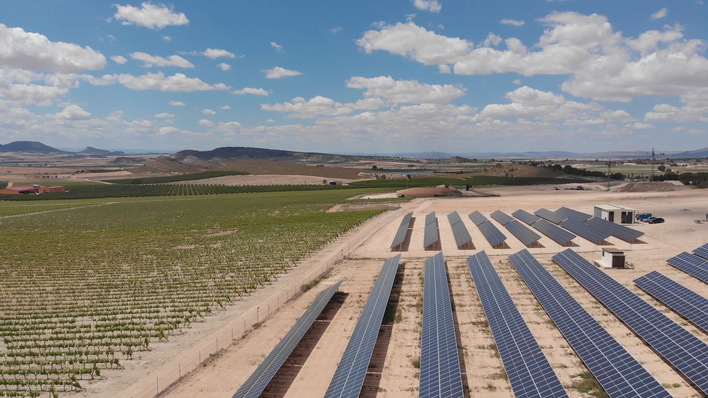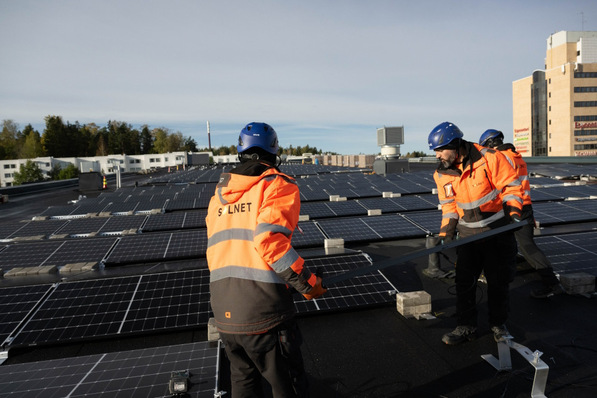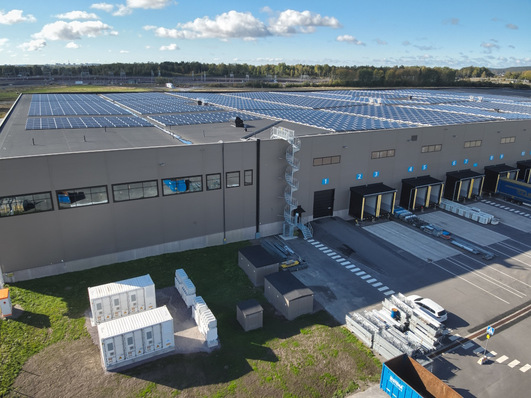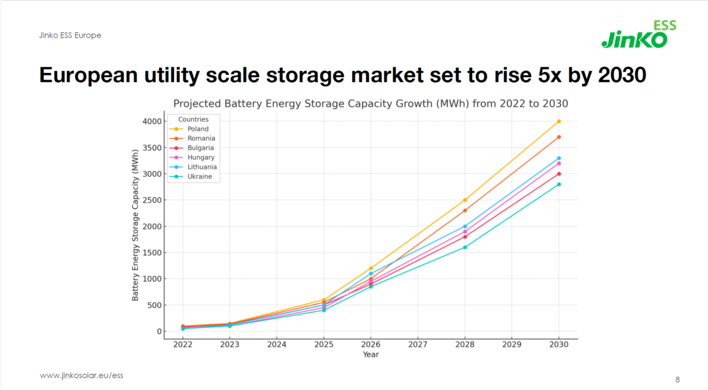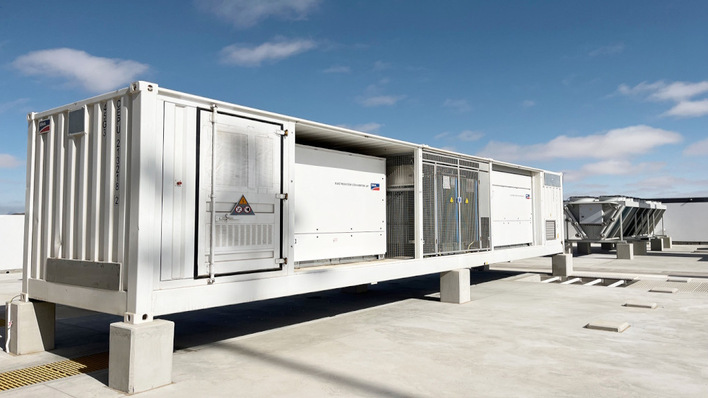A quiet neighbourhood, away from the hustle and bustle of the big city. Somewhat sleepy, perhaps, but most of all: beautiful. Gente slopes fall down to the Rhine, the premises are flanked by dense woodlands. This is the home of the Koch family. Thomas Koch is a banker through and through. He is head of the department for strategic projects at a bank specialising in developing countries. He is, for example, in charge of allocating credits to solar projects in Africa or Asia – anything from a 70 megawatt solar park in South Africa to smaller rooftop installations (Solar Homes) for villages in Kenya and Tanzania. The solar electricity of the users is paid for by mobile phone and via blockchain through a server located in Berlin.
Koch puts his money – and plenty of it – where his mouth is, and uses it to combat climate change. “On my business travels to many African countries I am often confronted by the effects of climate change and I know the consequences and risks involved for companies investing in, for instance, the agricultural sector,” he says. “This motivated us to make our own investments in a PV installation, including storage and electric mobility. It turned out great! Even with all the economic cost-benefit analyses, or under medium- to long-term considerations, after-tax profitability is quite satisfactory.”
Self-sufficiency and energy storage professionally assessed
Koch assessed the self-sufficiency of his own home as if it were one of the solar projects of his bank. He calculated it carefully and since it was commissioned, he has been keeping track of the projected yields and savings. And he is painstaking in his bookkeeping: “I am a banker, and I know my sums,” he says with a smile. “I feed 75 percent into the grid, and during the winter I only need to buy in very little electricity. In September I manage as much as 97 percent self-sufficiency.”
He did the accounting for this project himself, as if he had financed it through a bank. His verdict: “This installation is profitable. Even after taxes, this is still very attractive.” Koch originally started out with solar thermal. Sonnenkraft installed solar collectors on his roof years ago. Recently, the roof was due for refitting. The contract went to Priogo, a large installing company in Zülpich: “Though Priogo were by no means the cheapest, I was won over by their advisory services.”
Looks as flush as a roof-integrated system
Even refitting the roof so that the solar panels would be inconspicuous proved to be less than simple. “We removed the old tiled roof and replaced it with one made of trapezoidal sheet metal. And although the black panels are on top of the sheet metal, we levelled them using Tegalit tiles in such a way that it now looks as flush as a roof-integrated system,” Sebastian Poensgen, head of Priogo, explains. “Nevertheless, the ventilation of the panels’ undersides works very well.”
Priogo has installed a total of 14.5 kilowatts in CIS panels made by Solar Frontier. These were connected using Solaredge inverters (single-phase and three-phase). A Tesla Powerwall (6.4 kilowatt hours) connected to the single-phase inverter serves as the storage unit. Finally, the entire concept is complemented by a Volkswagen E-Golf plugged in in the garage.
The first Tesla Powerwall in the Rhineland
The customer wanted the energy storage unit to be by Tesla, and so they installed a Powerwall. Again, this is linked to Africa, where Koch funds commercial solar projects. Elon Musk, CEO of Tesla, was born in South Africa, and Thomas Koch is very familiar with that country. He knows how problematic power supply can be and what opportunities solar energy can mean to the Cape.
But it was more than such ‘soft’ arguments that clinched it for Tesla. “We had also talked about alternatives such as units by Senec or Sonnen,” Thomas Koch remembers. “Those two are both connected to the AC side of the inverter. Tesla’s is a DC system and is more efficient. So I decided to wait for the Tesla.”
Tricks to ward off martens
The east- and west-facing solar generator was installed in October 2015. Because martens are very common in this area of Bonn, all DC cables were coated in wire mesh. The panels were surrounded by perforated metal so that the rodents would not be able to slip through gaps or get into the corrugations of the roof. “The rubber coupling of the MP3 plugs contains soft rubber, which the martens love,” Sebastian Poensgen recounts. “For that reason we chose the harder MC4 plugs, which cause fewer problems.”
In December of 2015, the installation was connected to the grid, and the following April the Tesla Powerwall was delivered. The first full month of operation including the storage unit was May 2016. “It was our first installation that we had connected a Tesla Powerwall to,” Poensgen says. “I was very sceptical at first, but we have since installed more than a hundred units like that.”
20 people came to the solar battery storage party
Since then, Thomas Koch has not regretted his decision: “I recommend the Powerwall to anyone.” When it was clear that the storage unit performed satisfactorily, he gave a little ‘battery party’ for his neighbours. After all, word about the inconspicuous solar installation on his roof and the workhorse in his basement had gotten around. Attendance at the party was quite good: 20 people came to get a closer look.
The Tesla storage unit was mounted to the basement wall of his house. Because the unit is mounted in a way dampens sound, it causes very little noise. The Powerwall has an internal closed liquid cooling circuit. If it is mounted without acoustic decoupling, during high charging or discharging the high-frequency noise of the pump can be transferred to the building. “Under normal conditions, it runs as quietly as a refrigerator,” Sebastian Poensgen estimates. “At Mr Koch’s, we put the Powerwall right next to the inverter in the service room where it is nice and cool.”
Completely covered during the night
The selected battery has a capacity of 6.4 kilowatt hours. Charging and discharging currents can reach up to 3.3 kilowatts. Late into autumn, the battery was never completely discharged, most times it was actually only half empty, while during the winter it is usually discharged more deeply.
The battery covers the building’s demand throughout the night. In July between 5pm and 9am, the house consumes three kilowatt hours – twice that in winter. “During winter, our main consumers are the heat pump and lighting. We also cook in the evening, which comes on top of that.” Combining solar electricity and the cost of storage, Koch produces and stores power at 20 euro cents per kilowatt hour.
According to his experience, the storage capacity of the Powerwall is usually sufficient for a ‘normally efficient’ household. PV and solar power easily cover his yearly electricity demand of 3,600 to 4,200 kilowatt hours.
An e-Golf connected to a normal socket
However, Thomas Koch bought an e-Golf at the same time, which he uses for the daily commute to the bank in Cologne. It draws three kilowatts (at 10 ampere) to charge the vehicle’s 22 kilowatt hour battery. His parking space at the bank is also equipped with a charging point, where the car can be charged during the day. The Golf requires between 3,000 and 4,000 kilowatt hours per year, i.e. about seven to 10 kilowatt hours per day for the trip from Bonn to Cologne.
The car is charged through a regular socket rather than a wall box. “I do not need great output,” Koch explains. “It does not matter to me if the car takes five hours to charge, as that happens during the night.” And anyway, it would be quite difficult to get higher output from PV. “My satnav tells me where all the public chargers are,” Koch says. “And also, for the first three years, Volkswagen provides me with a regular combustion-engined car for three weeks per year. That is perfect for longer drives to go on holidays.”
Petrol cars are no fun anymore
However, Koch does not like petrol cars anymore and bunks on electric cars. “The e-Golf is relaxing, quiet and pretty zippy,” he says. “It is like a computer on wheels, and makes economic sense as well. In spite of the initial investment of 40,000 euros, I will be breaking even after four years.”
Koch offsets the additional costs of the e-Golf compared to a conventional Golf against savings when it comes to fuel, maintenance, service, repairs and insurance. The cost benefit per year is between 1,300 and 1,500 euros. “The running cost of the e-Golf is about one third of what it is in a petrol-powered car,” he explains. “Furthermore, the regenerative breaking saves real money, because breaking does not waste energy.”
The car uses 11 kilowatt hours of solar electricity per 100 kilometres. And there are no taxes on EVs. The fact that the car requires very little in terms of service also keeps costs down: There is hardly any wear on the break pads and Volkswagen provide the rented car free of charge. Koch has even factored in the electricity used to bring the vehicle’s battery up to temperature in winter. (HS/HCN)
Read more about energy storage
Stay informed, get our free newsletter twice a week. Register here: http://www.pveurope.eu/Newsletter
Related news:
http://www.pveurope.eu/News/Energy-Storage/Energy-storage-costs-prices-and-finance-at-a-glance


